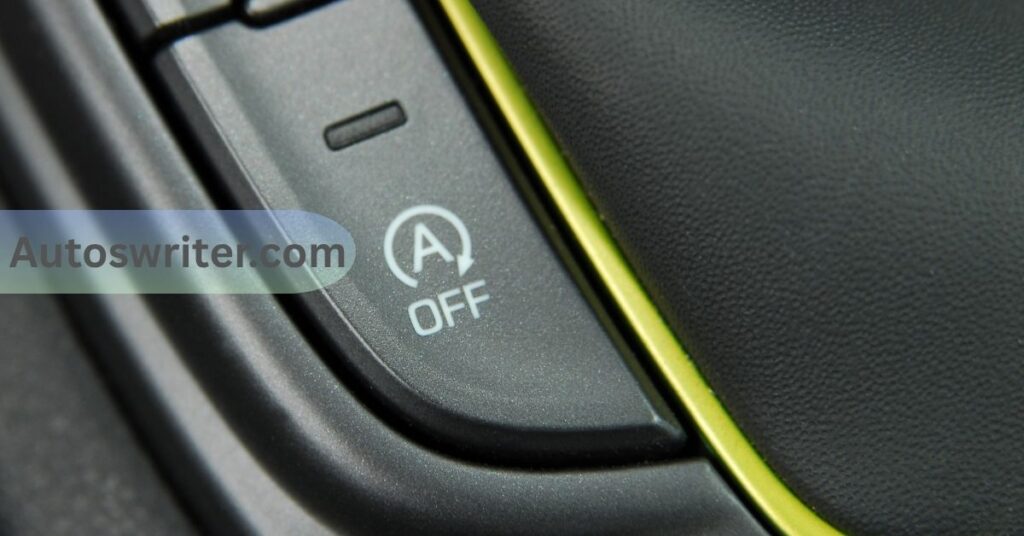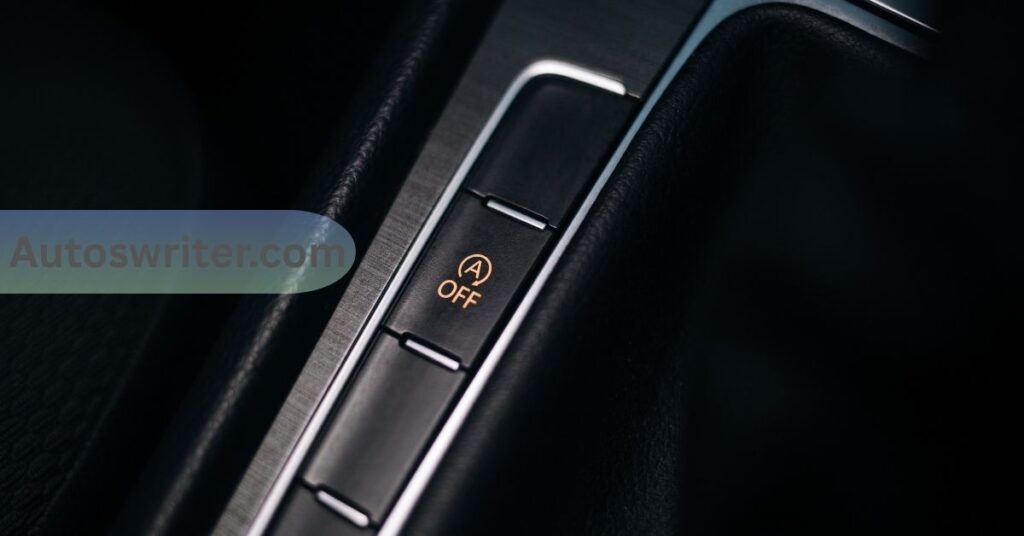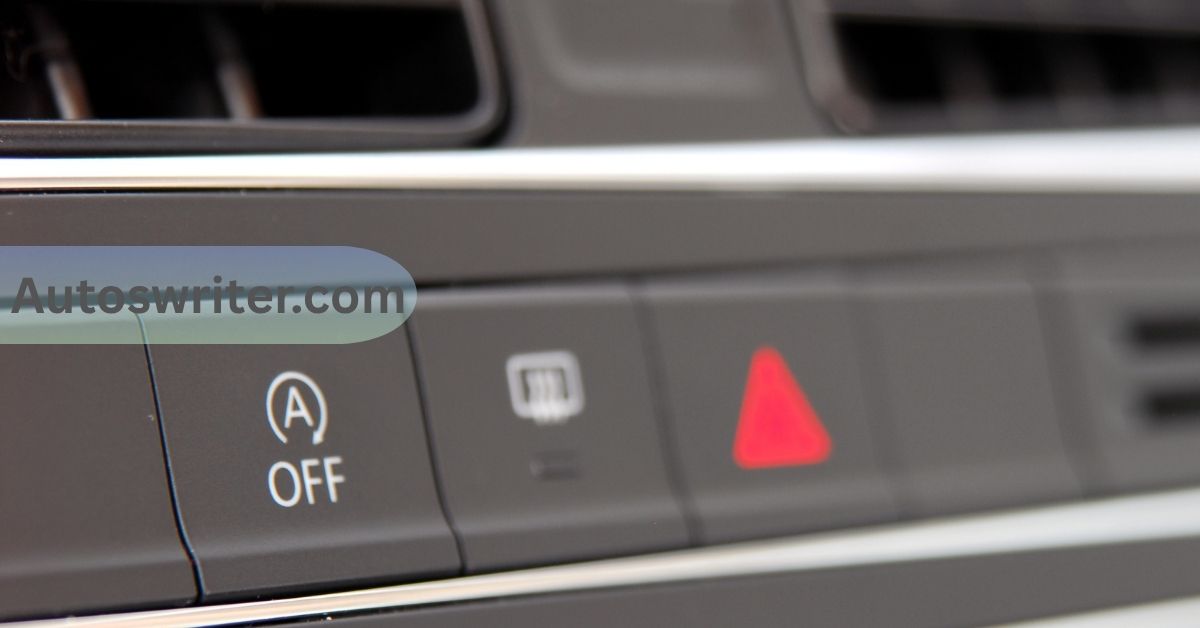The ‘A’ with a circle on Toyota dashboards is the start-stop indicator. This symbol shows that Toyota’s Auto Start-Stop (Stop & Start Engine) system is active. When this system pauses the engine, the A-symbol lights up on the multi-information display. In simple terms, the “A in a circle” means the car can automatically shut off its engine when stopped.
When the brake is pressed and the vehicle is stationary, the engine can pause to conserve fuel. The symbol indicates that the engine is off and on standby. When you lift your foot and drive off, the engine restarts and the symbol disappears.
This stop-start feature is built into many new Toyota cars (for example, RAV4, Camry, Corolla). It is not a warning. It indicates that the fuel-saving system is operational. If you see the light, it usually means the system is doing its job by stopping the engine at a stoplight. Always check your owner’s manual if you are unsure; however, in general, “A in a circle” refers to the auto engine stop-start mode.
What Is Toyota’s Auto Start-Stop System?
Toyota’s Auto Start-Stop (also known as the Stop & Start Engine System) is a fuel-saving technology. It stops the engine when the car is not in motion and restarts it when you need to move. Toyota introduced this system around 2017 in North America. It makes vehicles more efficient by turning off the engine at stops and restarting it for acceleration. This helps save fuel and reduce emissions when idling at red lights or in traffic.
1. How it works:
When you stop with your foot on the brake, the engine will shut off automatically. Then, when you release the brake or press the accelerator, the engine starts again. This all happens very smoothly – most drivers hardly feel it. Toyota designed it so that normal car functions still work (air conditioning, lights, radio) even with the engine off.
2. Why it’s there:
The goal is to save fuel and cut pollution. Running an engine uses gas and emits gases even when the car isn’t moving. By stopping the engine during short stops, the car uses less fuel. Studies (and Toyota) indicate that this can improve fuel economy by a certain amount (often up to about 10% in city driving). In short, the car rests instead of idling, which is more environmentally friendly.
Image: A Toyota driver takes a break at a red light. Toyota’s start-stop system can shut off the engine while the car is stopped, saving fuel. When the brake is released or the accelerator is pressed, the engine restarts smoothly.
When Does the Auto Start-Stop System Activate?

The start-stop system activates each time the car comes to a complete stop under the right conditions:
1. At a Stoplight or Stop Sign:
When the car is in Drive (D) and you press the brake to stop, the engine will automatically shut off. Toyota explains that if the vehicle is stopped and the brake is held down, the engine will “stop automatically”, and the stop-start indicator will light up.
2. Brake Pedal On:
Your foot must be on the brake pedal for the engine to stay off. As long as the brake is applied and the car is not in motion, the engine remains paused.
3. Normal Restart:
To restart, lift your foot from the brake or press the gas pedal. The engine will restart instantly and quietly. Toyota notes that releasing the brake will “start the engine automatically” and turn off the stop-start indicator.
In short, when you stop the car and keep the brake pressed, the system engages and shuts off the engine. When you go, it starts again. Most of the time, this only takes a moment and feels seamless. You can hear or feel a slight pause when the engine stops and starts, but it is designed to be smooth.
When Will the System Not Work?
The Auto Start-Stop system has several exceptions. It won’t work if conditions are not right for fuel saving or safety. Typical situations where the system will not activate or will pause include:
1. Weak or Low Battery:
If the car’s 12-volt battery is weak or depleted, the system will remain disabled. A low battery cannot reliably restart the engine. Toyota technicians report that a weak battery is a common cause of the start-stop system not functioning correctly.
2. Engine Temperature Extreme:
If the engine is extremely cold or hot, the system may not operate properly. For example, on a frigid morning or a steep uphill, the car may keep the engine running instead. Extremely hot or cold weather can automatically turn off the stop-start system to protect the motor and battery.
3. Climate Control Load:
If the air conditioning or heating is working very hard (for example, on an extremely hot day with the cabin AC running full blast), the system may skip shutting off the engine. Toyota allows the engine to stay on to keep the car cool. (Likewise, if defrosters or seat heaters need power, the engine may not shut down.)
4. Low Fuel:
When the fuel tank is nearly empty, Toyota’s system will often stay off. This is to ensure you have enough fuel to drive safely. As one Toyota expert notes, when fuel levels are very low, the start-stop function will be suspended to conserve fuel.
5. Gear Not in Drive:
The system only works when the car is in Drive (D). If you stop with the vehicle in Park, Neutral, or any other mode, auto stop-start will not activate.
6. Stopped Briefly:
If you come to a quick stop and then almost immediately press gas again, the system may not bother to turn off the engine because the stop was too short.
7. Manual Override:
If you press the A OFF button (see next section), the system is disabled until you turn it back on.
8. Other Factors:
Other conditions, such as a door left open, a seatbelt unbuckled, or a faulty sensor, may also prevent the system from functioning. In each of these cases, the “A” symbol may either not light up or will display an “A with a slash” icon (meaning auto stop is off).
In summary, if the car determines that shutting down would compromise performance or safety (e.g., a cold engine, a steep hill, or a weak battery), it will not shut down the engine. These safeguards ensure the system only works when it is safe and beneficial to do so.
How to Turn Auto Start-Stop Off in a Toyota:
Toyota allows drivers to turn off the system easily if desired. Most Toyota models have an “A OFF” button (or a similar feature) on the dashboard. This button usually shows an “A” with a circle or slash.
1. To turn off the stop-start system:
Press the A/OFF Button: Locate the button with the encircled “A” (typically located to the left of the steering wheel on the dashboard). Press this button. You should see a light on or near the button, and the “A” symbol on the dash may have a slash through it. This means the system is off.
2. System Reactivates on Restart:
The stop-start stays off until you either press the button again or restart the car. In Toyota’s design, starting the engine (with the key or button) will reset the system to ON by default. To turn off auto stop-start for a trip, press the button after starting. To turn it back on, either press the button again (to clear the “off” light) or restart the engine.
For example, if you press the A/OFF button at a stoplight, the engine will restart, and the system will remain off (the A icon will illuminate to indicate it’s disabled). Toyota confirms that pressing the off switch again will reactivate the system. Remember, this button only works for that drive. The system will turn on again automatically the next time you start the car unless you press the button again.
Also Read: Toyota Prius Warning Lights Guide-Complete Guide for Owners
Why Toyota Resets Auto Start-Stop Every Time:
You may wonder why Toyota forces the system back on each time you start the car. The reason is that Toyota believes the system should be active by default for maximum fuel savings and emissions benefits. If you turn it off on your last trip, the car will still start the next trip with start-stop enabled.
This is why, each time you restart the engine, you must press the A/OFF button again to turn it off. Toyota’s manual notes that the system will “reactivate when the button is pressed again or the vehicle is restarted”. In other words, turning off the system is always a temporary choice for that drive. Toyota’s design resets it to new starts, ensuring the feature is not forgotten and continues to save fuel automatically.
Common Questions About Start-Stop:
1. Does this hurt the engine?
No. It can help the engine by reducing idle wear. When you stop at lights, the engine rests instead of idling. Modern engines are built for frequent starts, and Toyota engineers explicitly its parts (like pistons, spark plugs, etc.) to handle it. Stop-start may even extend engine life by giving it breaks, as it protects individual parts from extra wear.
2. Is starting the engine often harmful for the battery or the starter?
Frequent starts do add load to the battery and starter motor. However, Toyota uses heavy-duty batteries and starters for this system. As one guide explains, although more starts “puts added strain on the battery and starter”, most cars with stop-start have components built to handle it. The best practice is to keep up with maintenance: if the battery is old or weak, replace it with a proper start-stop-approved battery.
3. Does it save much fuel?
Yes, it can help. Tests show auto start-stop systems often reduce fuel use by a noticeable amount in city driving. Some estimates put the savings at around 5–10%, depending on the conditions. That means less fuel burned when you’re sitting still at stoplights. Every little bit adds up, especially in heavy traffic or when driving short distances.
4. Why is the restart so quiet?
Toyota designs the stop-start system to be smooth and unobtrusive. You might not even realise that the engine has stopped. Toyota engineers ensure that restarting happens quickly and smoothly when you lift your foot. Many drivers report they barely notice it, except for the icon on the dash.
5. What if there’s a warning light?
If a problem occurs (such as a faulty battery or sensor issue), you may see a message or indicator light. In that case, have the car checked? Often, it’s something like battery health or a software glitch rather than a severe failure.
When You Might Want to Keep It Off:
Although the start-stop system saves fuel, some situations might make you prefer it off:
1. Towing or Heavy Load:
If you’re pulling a trailer or a heavy load, you may want the engine to run continuously for maximum power and instant control. In such cases, drivers often turn off the start-stop feature.
2. Very Hot or Cold Weather:
On an extremely hot day, if you need maximum air conditioning all the time, you may want to turn the system off so the compressor runs with the engine on. Similarly, on a freezing day, keep the heat steady. (Toyota notes drivers may prefer to turn it off in those cases.)
3. Comfort or Personal Preference:
Some drivers dislike the engine shutting off, especially if they want the cabin to stay cooler or warmer during each stop. If it feels uncomfortable or annoying, turn it off via the button.
4. Short City Trips:
If you are only going a very short distance or making many quick stops in a row, the fuel saved may be minimal. Leaving the engine on could be easier.
Generally, if you have a good reason (such as towing, climate control, or comfort), it’s fine to press the A/OFF button and override the system. Just remember that it will restart with the next start unless you turn it off again.
Tips for Using the System Comfortably:

1. Brake Gently:
When stopping, apply firm but smooth brake pressure. The engine will turn off while you hold the brake. Keep holding the brake until you’re ready to go. Then, release to restart.
2. Maintain Your Battery:
Since the system relies on a strong battery, keep your car battery healthy. Clean the terminals and replace the battery if it’s old. A fresh battery ensures the auto-stop works and restarts the engine reliably.
3. Stay Aware of Conditions:
Be aware that on hills or in freezing weather, you may not see the “A” symbol because the system may pause. If you don’t see it at a stop, it means the car is keeping the engine on.
4. Use the Button When Needed:
If you feel the air in the cabin getting warm at a stop or you want the engine running, press the A/OFF button at the beginning of your drive. You can always press it again the next time the car starts.
5. Listen to Your Car:
The start-stop system is designed to feel natural. If you hear the engine stop and start, it’s normal. If you experience grinding or delays, please notify a technician; otherwise, smooth restarts are regular.
6. Please consider the Benefits:
Remember why it’s there – saving fuel and reducing wear on idling engine parts. Using the system when conditions are okay can reduce fuel costs and emissions over time.
By understanding how the system works and when it engages, you can drive comfortably and even use it to your advantage. Most Toyota drivers leave it on to get better fuel economy, but they also know how to switch it off when they prefer.
Sources: Toyota’s owner manuals and technical materials provide detailed explanations of the Stop & Start system. Independent guides and Toyota service articles also discuss its operation and conditions. These resources were used to clarify how the symbol and system behave.
Also Read: Goodwill Toyota Fix Canada-Complete Owner’s Guide
Frequently Asked Questions:
Q1. What does the A with a circle around it mean in my Toyota?
It indicates the Auto Start-Stop system is active. This feature automatically shuts off the engine at stops (like red lights) to save fuel and reduce emissions.
Q2. Can I turn off the Auto Start-Stop system?
Yes. You can press the A/OFF button (usually on the dashboard) to turn it off. However, the system resets each time you restart the car, so you’ll need to turn it off again if you don’t want it to remain active.
Q3. Why doesn’t the system activate at every stop?
The Auto Start-Stop system won’t work if the battery is low, the engine is too hot or cold, the fuel is low, or the climate control system is under a heavy load. These conditions are built-in safeguards.
Q4. Is the Startup system bad for the engine or starter?
No. Toyota equips its vehicles with reinforced batteries and starter systems specifically designed for this purpose. Using the system may help reduce engine idling wear over time.
Q5. Does the Auto Start-Stop system save fuel?
Yes. Especially in city traffic, it can improve fuel economy by reducing unnecessary idling. Toyota estimates fuel savings of up to 10% depending on your driving conditions.
Conclusion:
The “A with a circle” symbol on your Toyota’s dashboard isn’t something to worry about—it simply means your vehicle’s Auto Start-Stop system is active. This fuel-saving feature turns off your engine when you stop and restarts it when you’re ready to move.
It’s designed to improve gas mileage and reduce emissions without impacting comfort or performance. However, it may not engage under certain conditions, such as a low battery, extreme weather, or a high air conditioning load.
You can manually turn the system off by pressing the A/OFF button, although it will reactivate with every restart. Understanding how this system works can help you drive smarter and avoid unnecessary concerns about the symbol on your dashboard.



